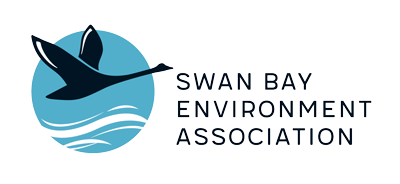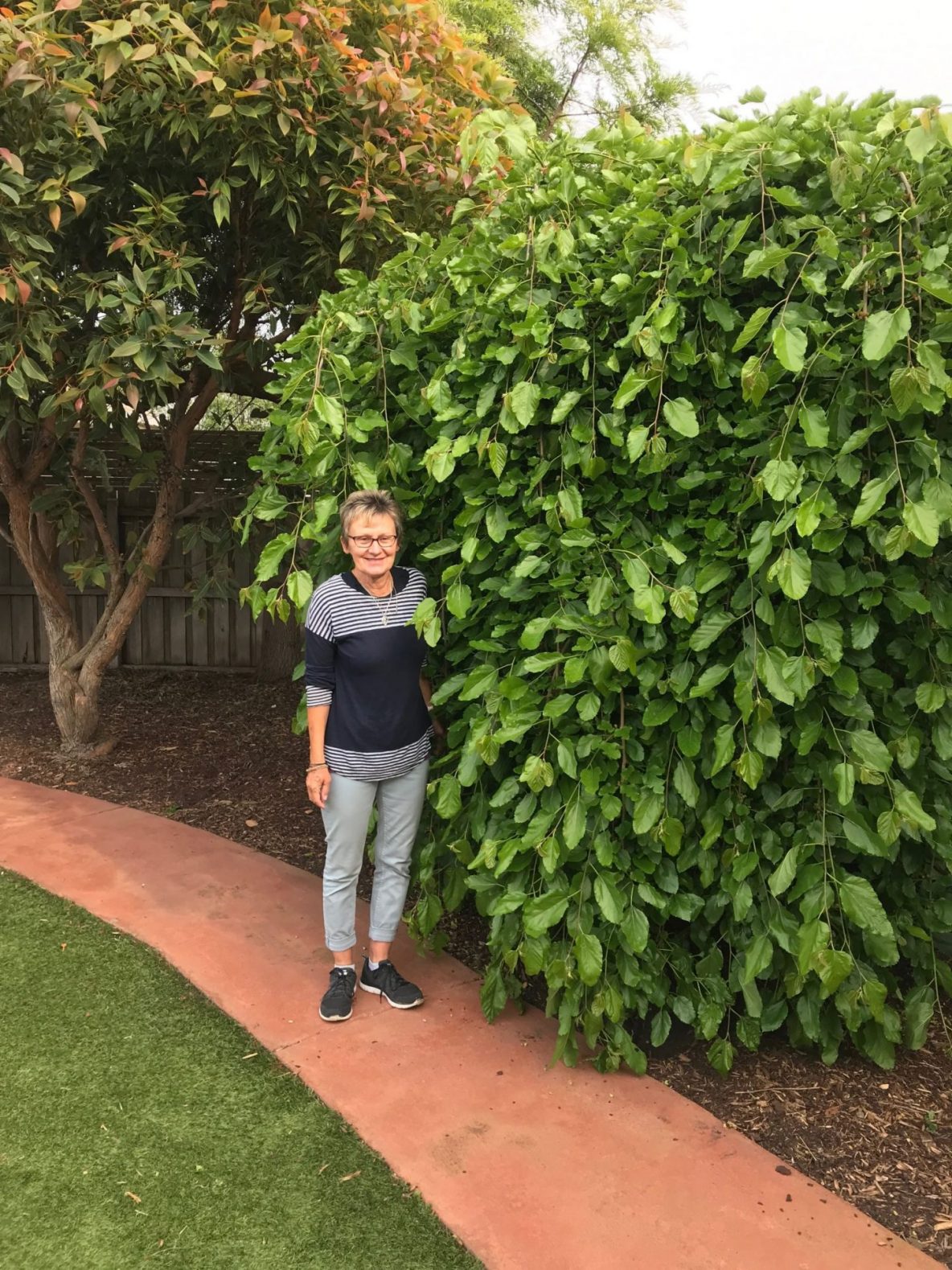When Evie and Bruce moved into their Point Lonsdale home three years ago and began their garden ‘restoration’, they were very keen to add native plants. However, they did not distinguish between local indigenous varieties and other natives. Evie reflects: ‘I just planted what I knew and what I liked!‘
Initially there were many flowering bulbs popping up in the garden, including gladiola, arum lilies, blue iris, tulips, daffodils, bluebells, freesias etc. While beautiful when in bloom, Evie really wanted her garden to be more natural and to help support wildlife – insects, birds, bees, butterflies and reptiles.
Evie found out about the Swan Bay Environment Association’s Gardens for Wildlife program and contacted the Coordinator for assistance. ‘The visit was very valuable in identifying areas I could improve by mulching and layering, additions I could make to encourage wildlife (e.g., old logs, water bowls), weeds that should be removed, and most satisfying, identifying plants that had self-seeded and that were indigenous.‘
They extended existing garden beds and topped them up with mulch. In the front garden the main plants were two young Lilly Pilly (Syzygium smithhii) trees, with some roses and scattered seaside daises. They removed the roses, kept the Lilly Pilly trees, and planted several grasses including Lomandra longafolia, and westringias (Wynabbie Gem), creating a deep garden bed with layered planting.
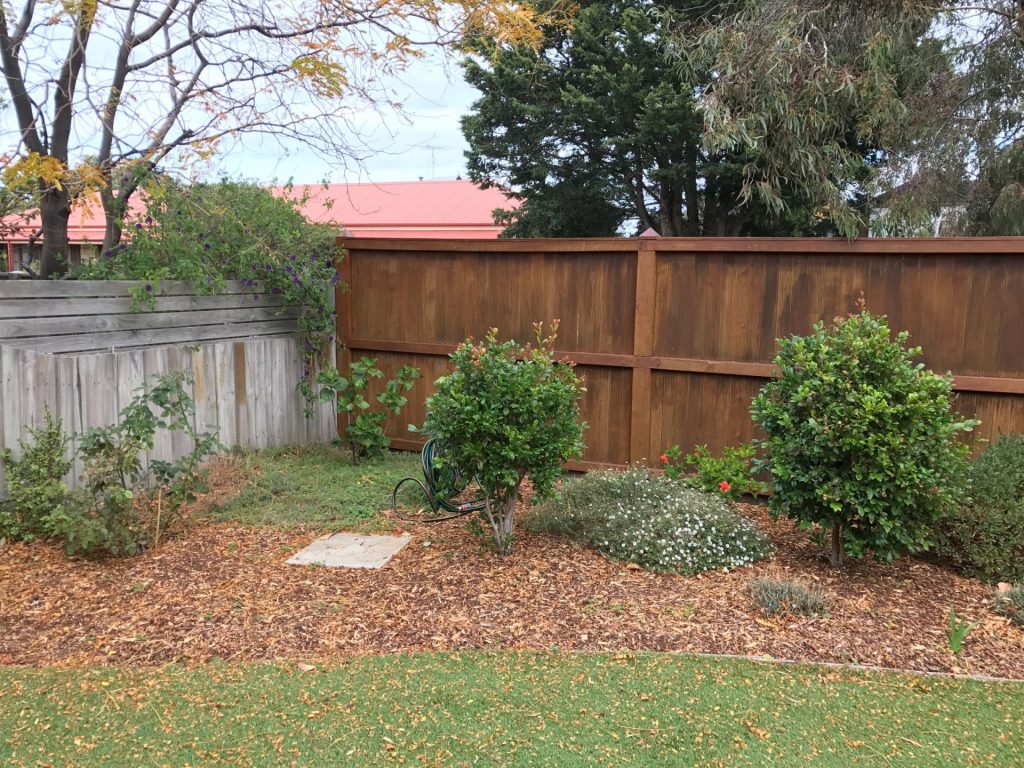
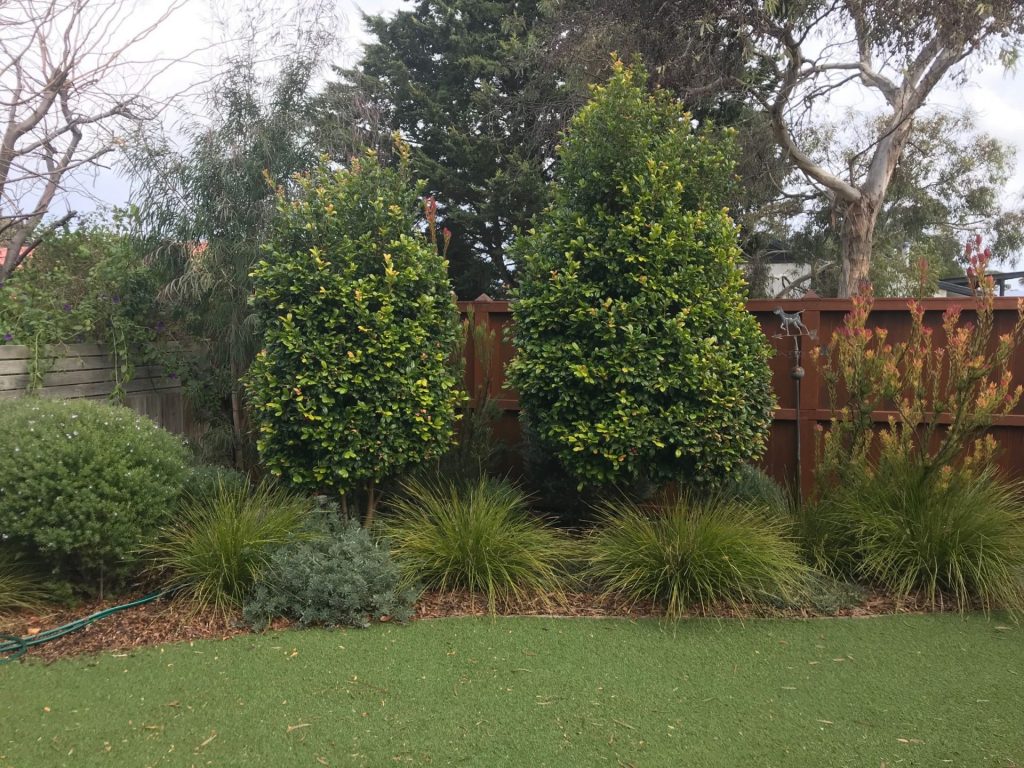
The Lilly Pilly trees have been regularly pruned and have grown to a size where they are now being used as nesting habitat by a pair of Red Wattlebirds. A feature tree, a Willow Myrtle (Agonis flexuosa) was planted in the corner of the garden bed with a long-term view to provide weeping foliage and bird habitat.
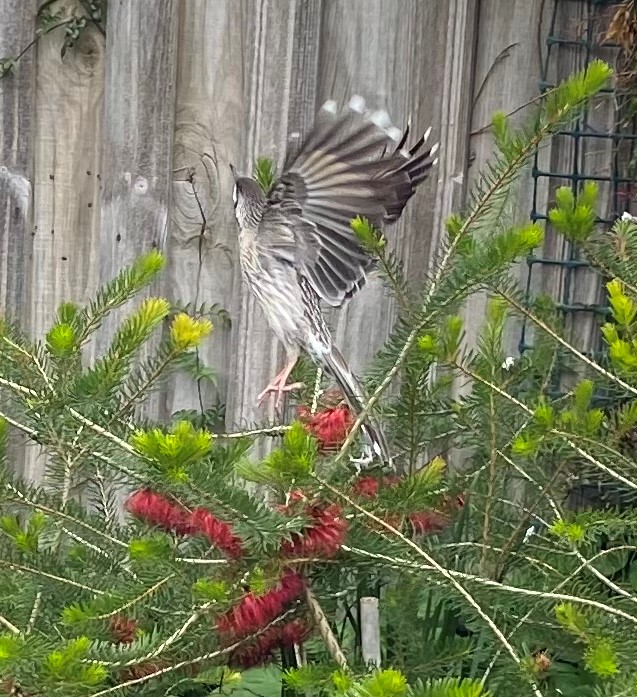
The garden bed outside the kitchen window was also well mulched and replanted. Several years on it is a very colourful and attractive area for insects and local pollinators. Planting here included westringias, grevilleas, a dwarf banksia and a dwarf callistemon, Slender Velvet Bush (Lasiopetalum baueri), Sticky Daisy Bush (Olearea glutinosa), correas and Common Tussock Grass (Poa labillardierei). Again, roses were removed and some clivia transplanted to a shady spot in the back garden. Violets and wild iris were split and encouraged to grow in many gaps, so the area now is quite happily covered. Pink gaura (Oenothera lindheimeri) was planted here and there to attract bees.
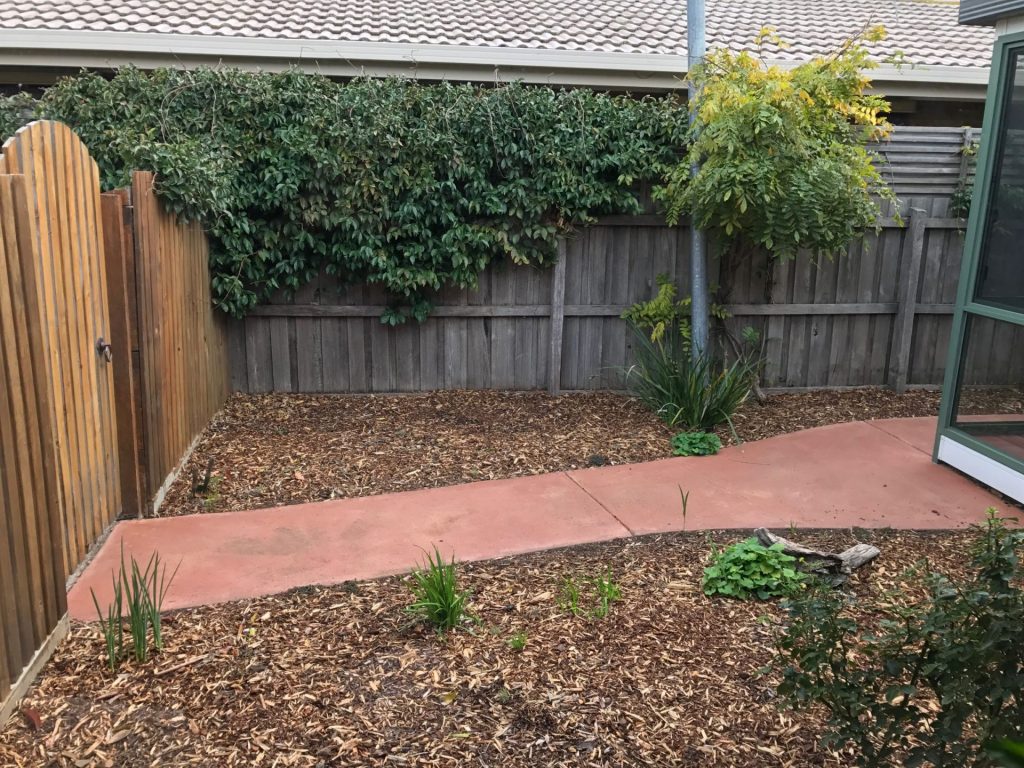
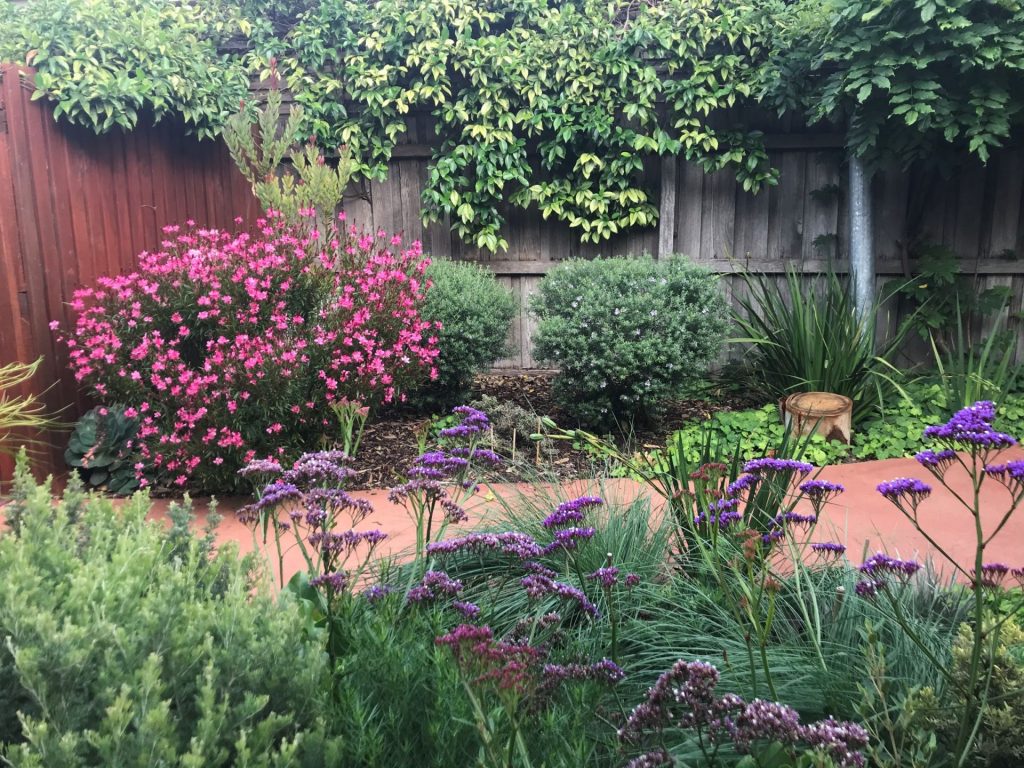
Tree stumps from a neighbour’s felled gumtree were added under a weeping mulberry in another mulched area of the rear yard where numerous White Correa (Correa alba), Common Correa (Correa reflexa) and Rock Correa (Correa glabra – yellow) were planted. Grasses such as Wallaby Grass (Rytidosperma); Tussock Grass (Poa labillardierei) and Sea Rush (Juncus kraussii) have been underplanted, and the area has become home to many skinks and a local Blotched Blue-tongued Lizard (Tiliqua nigrolutea). The area offers protection and food sources such as snails and beetles for these reptiles.
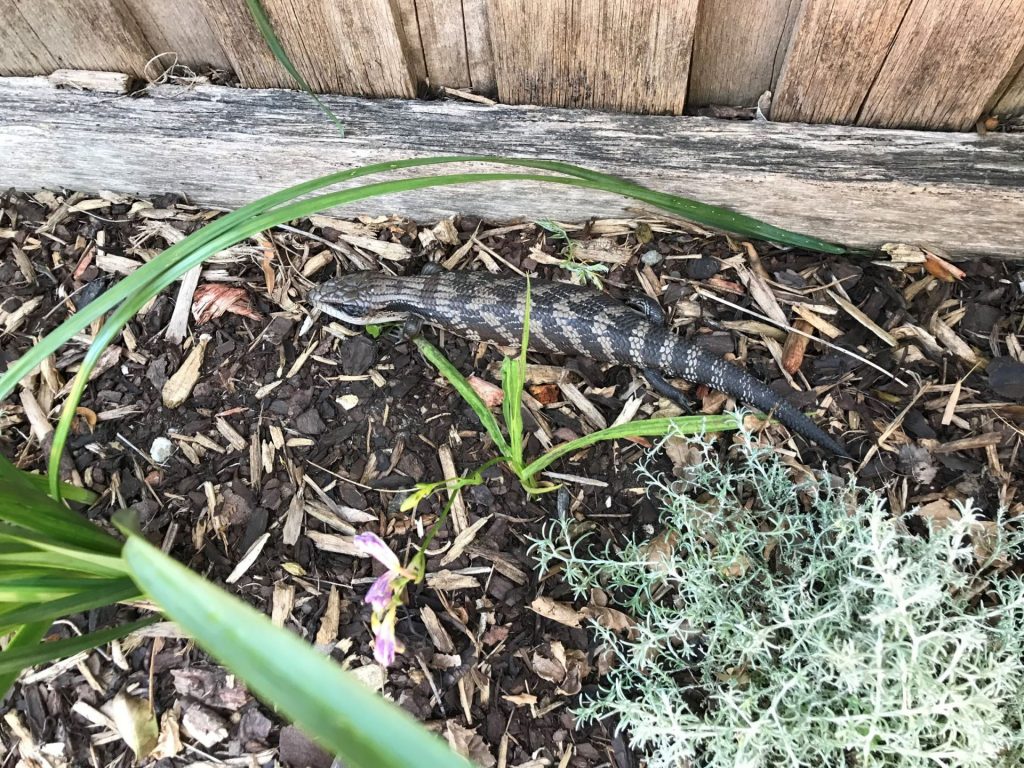
Knowing the value of the struggling eucalyptus tree on the front verge, Evie began creating an attractive new garden. She started with a skirt of natural mulch, which included fallen banksia flowers and cones from her neighbour’s tree. She weeded and planted groundcovers, grasses and colourful butterfly attracting daisies. This ongoing project has not only provided enjoyment for Evie, it has improved the health of the tree and the aesthetics of the streetscape. It’s become a focal point and attracts the interest and admiration of her neighbours and passersby.
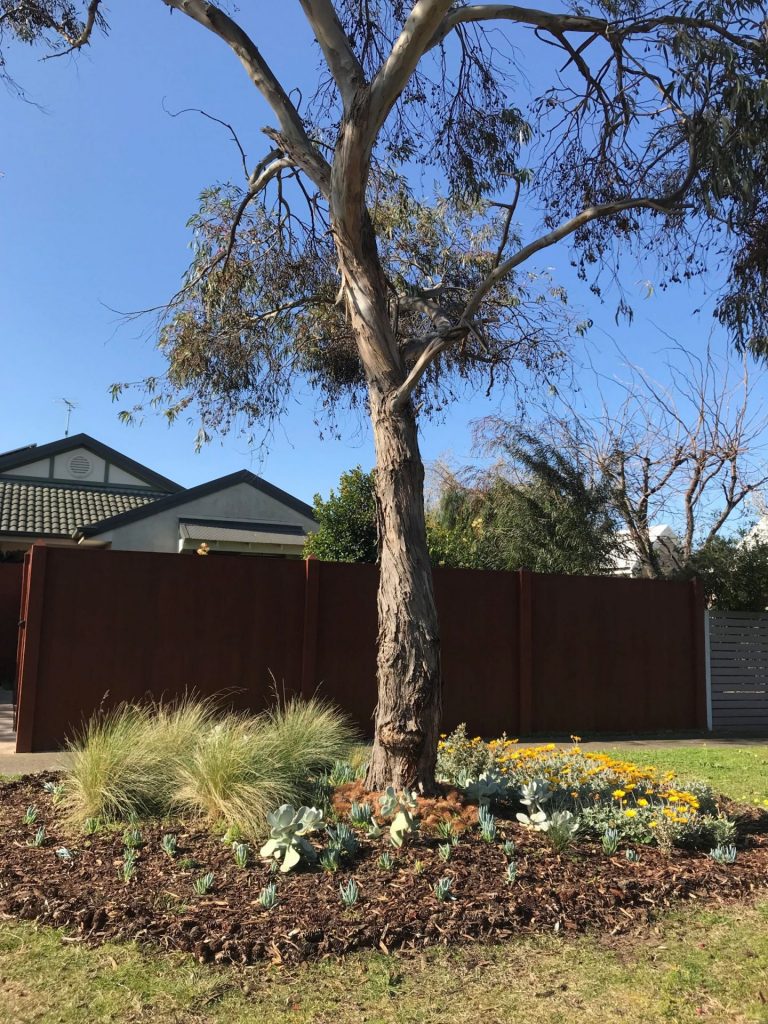
A few insights from Evie
“Following my Gardens4Wildlife visit in August 2019, I planted the indigenous tube stock that I received (velvet bush, daisy bush, correas, native geranium, poas) and then immediately went out to Queenscliffe Indigenous Nursery and purchased another 20 tubes!
What I enjoy most about my garden now is the wildlife it attracts and the feeling of having a natural local habitat surrounding our home. I love to see the birds and bees feeding, and butterflies flitting around, and I’m always happy to welcome visitors like skinks or larger lizards. It’s a calming presence and provides many benefits to maintaining a positive spirit.”
